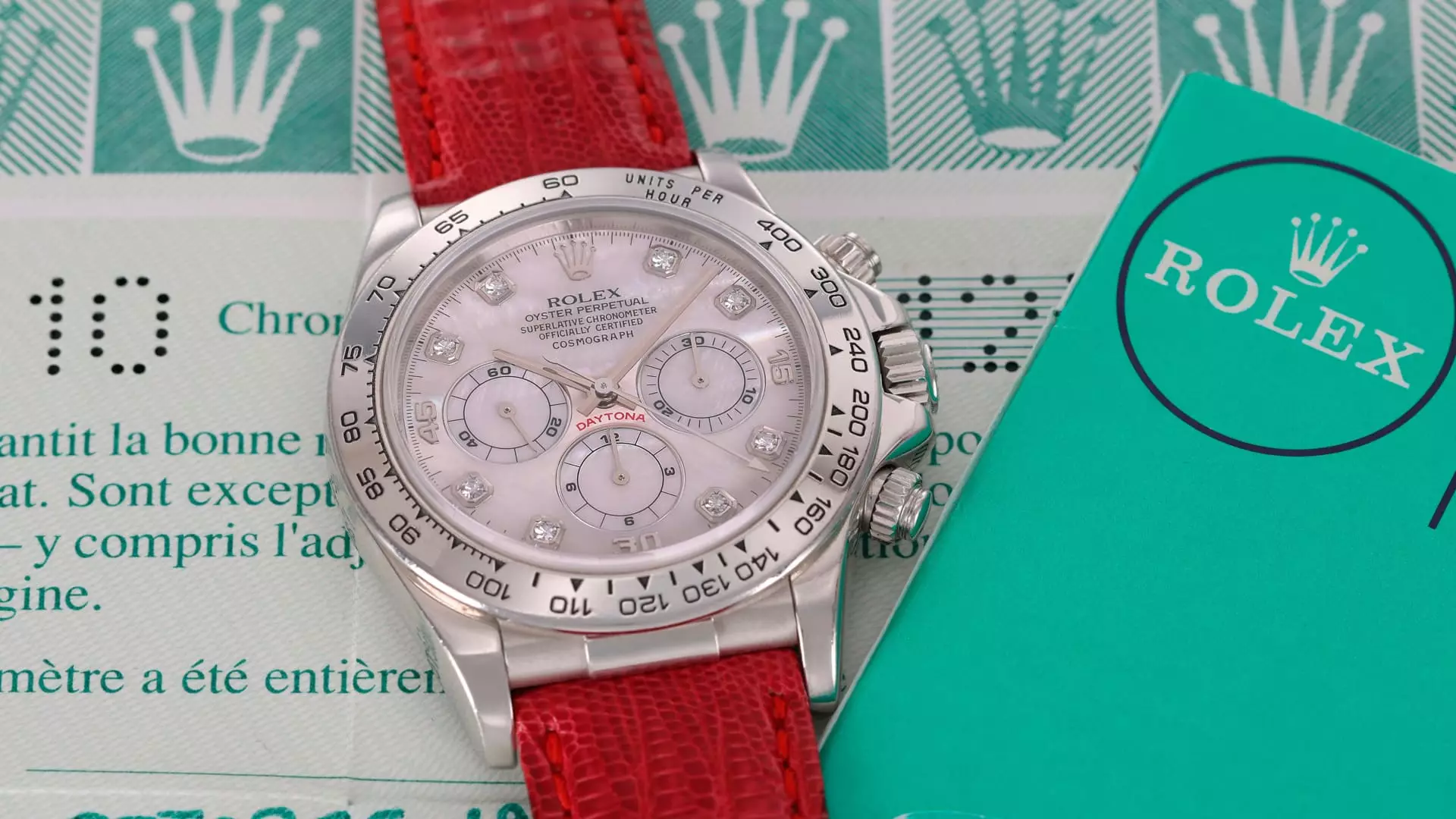At first glance, the upcoming auction of a 1999 platinum Rolex Daytona at Sotheby’s Geneva seems like a mere display of luxury, with an anticipated final price of up to $1.7 million. However, this specific timepiece transcends its monetary value; it is a symbol of exclusivity and craftsmanship that challenges conventional perceptions of luxury watches. Unlike the myriad mass-produced models that have flooded the market, this watch stands as a bespoke creation, crafted for an individual client—a rarity in the world of Rolex, where customization typically remains a far-fetched dream.
The Daytona’s construction includes a mother-of-pearl face adorned with ten diamonds, establishing it as not just a timekeeper but a work of art. As Pedro Reiser, a senior watch specialist at Sotheby’s, pointed out, the rarity of such commissioned pieces within the Rolex lineage is remarkable. The fact that only four exist, each crafted for a member of the same family and sharing unique dials, amplifies its rarity and heightens its desirability. While many Rolexes tell the time, this one tells a story—a lineage of exclusivity.
The Enigmatic History
Much of the Daytona’s allure lies in its history, particularly its creation under Patrick Heiniger, the enigmatic CEO who led Rolex through significant growth from 1992 to 2008. His tenure availed the company a blend of secrecy and revelatory marketing that transformed Rolex into more than just a respected brand; it became a luxury icon. Speculation swirls around Heiniger potentially commissioning similar pieces, but Reiser warns that much of this remains unverified. This uncertainty builds intrigue rather than detracts from the watch’s lore. After all, isn’t the mystique of a piece often as valuable as the piece itself?
Historically, Rolex did not craft platinum Daytona models until 2013, making this one an anomaly of sorts. The implications are significant; it suggests a forward-thinking ethos at Rolex long before the market trends caught up. The existence of a platinum model in 1999 introduces an element of surprise that reinforces the watch’s appeal to serious buyers, especially in the context of today’s investment-oriented mindset.
Investment Gone Wild
The rising prices of luxury watches have become a phenomenon in recent years, with rare models like this Daytona often seeing staggering appreciation rates. According to Knight Frank’s index, luxury watches increased over 125% in value over the past decade—quite a staggering statistic that can’t be overlooked. In a world where traditional investments often falter, the allure of rare watches becomes hard to resist.
As younger buyers and affluent collectors flood the market, these timepieces start to lose their identities as merely decorative objects and transform into statements of financial acumen, social status, and personal values. This particular watch’s provenance only adds to its investment potential; after all, who wouldn’t want to own a piece of history that signifies both luxury and rarity? However, the prospect of such investment raises questions about the meaning of value. Are we investing in the craftsmanship of a watch or simply gambling on its price tag?
The Future of Luxury Timepieces
As the demand for high-end watches continues to expand globally, particularly among millennials and Gen Z, the market is shifting. Watches are rapidly evolving into a canvas for personal expression and investment strategy, making this 1999 Rolex Daytona incredibly timely. Collectors are not just buying a timepiece; they’re buying into a culture that intertwines art, history, and financial speculation.
While the allure of such timepieces sits firmly in the territory of ostentation, there’s no denying the artistry and craftsmanship involved in their creation. This delicate balance of aesthetic beauty and potential investment return finds itself at the heart of the ongoing conversation about luxury. As this 1999 Platinum Rolex Daytona finds its way to the auction block, it serves as a reminder that these pieces are not merely watches; they embody legacies worth celebrating. Whether you see it as an investment opportunity or a collector’s dream, the aura surrounding the Daytona only cements Rolex’s position within the pantheon of luxury studies—an ideology poised for future breakthroughs. The conversation around such masterpieces will undoubtedly continue, weaving themselves deeper into celebratory dialogue surrounding artistry, wealth, and identity in our fast-paced, economically-driven world.

